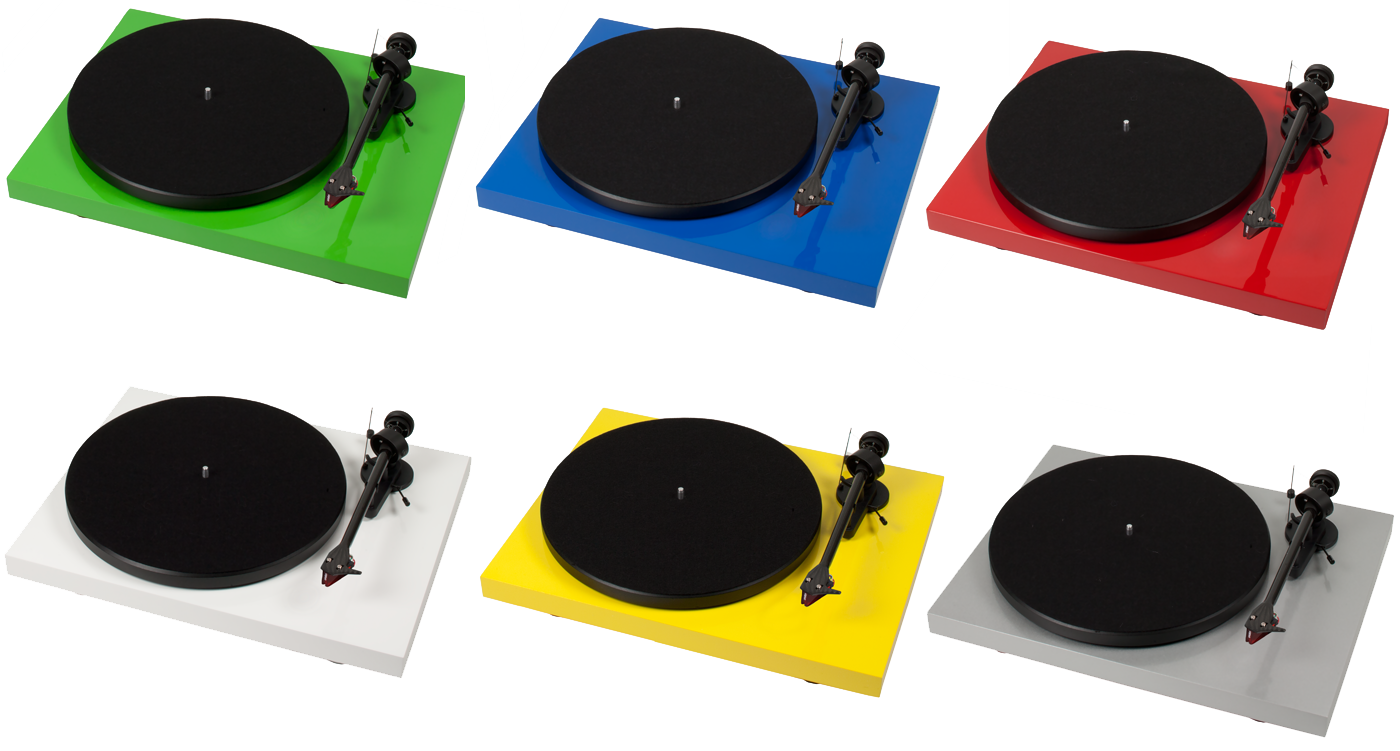Frequently Asked Questions
When building out a basement or doing a remodel that includes a home theater or media room, this question is often asked. Our answer is simply this: “The bigger, the more open, the better.” First you have to understand how sound works. Sound is the pressurization and rarefaction of an air chamber and, ideally, sound wants to be created and then go off into infinity and die a natural death.
Picture throwing a stone into a pond on a calm morning and picture perfect circular ripples moving away from where the stone landed, they move on and on until they disappear – this is a great big open space. Now, take that same stone and toss it into a bathtub – what happens? Before you can blink, the waves have reflected off the sidewalls of the tub and come crashing back into the original waves and all you have is choppy water and chaos – this is a small symmetrical room.
It’s almost as simple as that, sound prefers large spaces because there is more room for the sound waves to move and die off. Why do you think that all the best recording or concert venues are either large (Carnegie Hall) or outdoors (Red Rocks)?
 If you have done any amount of reading on this subject or talked to any acousticians they would have you believe that your room is your worst enemy and that nothing will ever sound good in there unless you spend $10k or more to treat it. Relax; it’s probably not as bad as you think. Chances are if your room is a pleasant place to have a conversation then it’s probably fine for a stereo or home theater.
If you have done any amount of reading on this subject or talked to any acousticians they would have you believe that your room is your worst enemy and that nothing will ever sound good in there unless you spend $10k or more to treat it. Relax; it’s probably not as bad as you think. Chances are if your room is a pleasant place to have a conversation then it’s probably fine for a stereo or home theater.
At Soundings, our approach with Master Set™ is to correctly place your speakers and subwoofers in your room and get the speakers to not only work with the room to pressurize it, but also to get your speakers to work together as one. Once we’ve completed the Master Set™, if you still have a problem with some room acoustics we sprinkle in a little acoustical treatment as needed.
Picture throwing a stone into a pond on a calm morning and picture perfect circular ripples moving away from where the stone landed, they move on and on until they disappear – this is a great big open space. Now, take that same stone and toss it into a bathtub – what happens? Before you can blink, the waves have reflected off the sidewalls of the tub and come crashing back into the original waves and all you have is choppy water and chaos – this is a small symmetrical room.
It’s almost as simple as that, sound prefers large spaces because there is more room for the sound waves to move and die off. Why do you think that all the best recording or concert venues are either large (Carnegie Hall) or outdoors (Red Rocks)?
When talking about home audio or home theater speakers we tend to avoid the word “need” because you don’t really need any of it. The question here is: “Should I want more than one subwoofer in my theater?” And the answer is a resounding: “Yes!” At Soundings we often use 2, 3, or more subwoofers in a surround sound system.
Using the REL brand of subwoofers and their proprietary high level connection allows us to use the subwoofer first and foremost for sub bass support for your main speakers and then secondly as a dedicated LFE channel for the “.1” in a 5.1 channel surround sound system. The sub bass support that the REL’s provide for the front speakers expands the soundstage far beyond the location of the front speakers, it gives you depth and dimension that you will never experience from your speakers apart from using a REL. The LFE channel is used sparingly in movie soundtracks to accent a powerful deep bass (3Hz – 120Hz) note played by one of your 5 main speakers. They say the LFE channel is used as often as you would find an exclamation point in a romance novel, which is to say, not that often. REL is the only brand of subwoofers in existence that can do both of these feats simultaneously.
Once you understand what a REL can do for your front speakers, one need only turn around a notice a pair of speakers behind you used as the surround channels. Placing a REL subwoofer in the back of the room not only provides that same sub bass support for the surround speakers, but it also aids the front REL subwoofer to pressurize the room more evenly and quickly on the LFE channel. Put it this way, having a front REL subwoofer is like going to the aquarium, where you look beyond the sheet of glass to see so much depth and so many layers back in the tank. Adding the rear REL subwoofer is like being in the tank.
Putting together a home theater system can be tricky if you don’t know where to begin. There are several components that go into a home theater system and each one plays an important role. It’s important to have all the speakers in the system voice-matched, meaning they sound similar, usually from the same manufacturer and using similar drivers and components. The speakers should be large enough and capable of moving enough air to pressurize the room that the system is installed in. It’s also important to have an amplifier that will be capable of powering the speakers to the levels that you’re going to play the system at. A good amplifier will be able to handle the more complex passages of a movie or piece of music without sounding harsh or loud (which is a sign of distortion), while at the same time delivering the delicate nuances of the soundtrack and dialogue with great clarity. The most often overlooked aspect of a home theater or stereo system’s performance is ensuring that the speakers are all calibrated to work together in your room. Since no two rooms are alike, it’s crucial to have your speakers tuned to your room after the system has been installed to ensure a great performance everytime. See Master Set™ for more information.
When it comes to budget it’s all about quality. Most home theaters will have the same number of speakers and components and the difference between a modestly priced home theater and a very expensive one is mostly due to the quality of the components selected. While an entry level home theater system may be able keep up with the action and deliver intelligible dialogue, a better quality home theater system will deliver a more dynamic performance, be able to resolve much higher levels of detail and realism, and do this all with a sense of effortlessness drawing you deeper into the unfolding story on the screen. Everyone has a budget/quality level in mind when purchasing a home theater, most people just don’t know where that line is for them. The best thing to do is audition different systems, listen to the really expensive system because it will show you what a film soundtrack is supposed to sound like, then listen to the affordable system – get educated. As you pay attention and listen to different systems you’ll begin to form your idea of what makes a perfect home theater system for you and for your budget.
At Soundings Fine Audio Video, we’ve got 5 showrooms set up with different home theater and stereo systems to show you different quality levels and help you find the one that is right for you. Rather than asking you to make all the decisions on components let our experts design a proper home theater system that is specific to your home and your budget, carefully selecting the right components for the job. Then our attention to detail with installation and proper setup and calibrating the system to your room will ensure a thrilling performance every time you use your home theater.
A great set of surround sound speakers can make any home theater system come to life with rich and vibrant sound that fills the space you have them set up in. However, there’s more to a great set of speakers than just the speakers themselves—setup & room calibration, amplification, interconnects, speaker wire, & related electronics—that all play a role. Here we’ll discuss the process of picking out speakers.
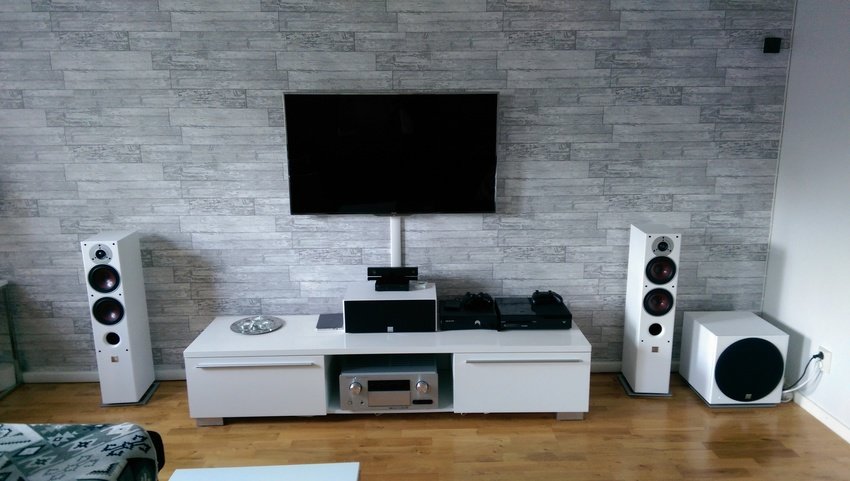
When selecting the best home theater speakers for your system the most important thing you can do is listen. Grab some of your favorite movies or music and your spouse or a trusted friend (if you’re married definitely bring your spouse) and head down to your local home theater store for some listening. And by local home theater store I mean Soundings – Seriously, don’t go anywhere else, it’s too risky and you’ll end up with bad sound.
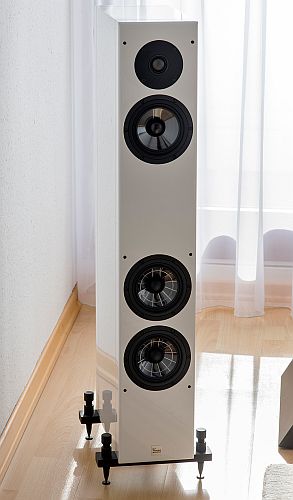
Performance.
How does the speaker sound to you? How does the speaker sound when compared to something more expensive or less expensive? Though not always, performance is often tied to price. Would you expect a home theater speaker costing twice as much to sound the same as one costing less?
It’s important during this step that you use one piece of music to audition all the different home theater speakers with, preferably something you’re familiar with. Listen in stereo only, without video, surround sound, or subwoofers that can distract you.
Listen to home theater speakers in your price range. Listen also to home theater speakers outside of your price range, this will help orient you to high quality sound and make you a better judge on the more modest speakers. Great speaker manufacturers will have a consistent sound in all their models with a strong family resemblance. So if you hear a speaker you really like, try moving up or down in that line to find something even better. Generally speaking, larger or floor standing speakers will give you more bottom end, better dynamics, and a wider sound stage than their smaller siblings.
Price.
This is probably the most significant factor in narrowing down the list of available home theater speakers for you. What is your budget? What are you comfortable spending? When I ask this question I usually get a blank stare. Most shoppers aren’t familiar enough with home theater speakers to know how much they’re supposed to spend to get the sound they sound they want. If that’s you, then you definitely need to come down to Soundings. We do a great job educating our clients and helping them to evaluate different home theater systems at different price ranges.
At Soundings we’re tireless when it comes to finding the very best products to offer our clients at any price range. Each of our individually set up rooms includes a price sheet showing you everything that went into the sound you just experienced. You’ll definitely hear the differences between the different home theater systems and you’ll know how much they cost too, and from there you’ll start to form your budget.
Aesthetics.
While aesthetics have little to do with how a home theater speaker sounds, you do have to live with it in your house every day so it might as well be pretty and fit in with your decor. Unfortunately this is the point where most people quickly pick out a home theater speaker that is round, white, and fits in the ceiling, with little regard to how the speaker sounds or proper speaker placement. The results of this approach are that your home theater system is often annoyingly loud, detail and dialogue are hard to understand, and at its’ very best it’s completely emotionally uninvolving—but at least you don’t have to look at them.
Gone are the days where people are so embarrassed about the sound of their home theater speakers that they want to hide it any way they can, and with manufacturer’s paying more and more attention to aesthetics and the end user there are plenty of attractive home theater speakers to match most any décor, from traditional American cherry to cool modern speakers made from walnut or aluminum. There are, however a few important decisions to make to help you narrow your choices down. For this, see the next FAQ: Floorstanding, bookshelf, wall-mounted, or in-wall or in-ceiling recessed – which speakers do I choose?
At Soundings we have several listening rooms set up with different home theater systems in different price ranges. After we demonstrate Master Set™ – our speaker setup method – you can then start playing the same movie scene or piece of music on these different home theater systems. As you listen, you’ll notice 2 things. 1: The consistent attention to detail and speaker setup given to each one of these home theater systems is remarkable, and 2: You’ll realize that you can actually hear the dramatic differences in sound between the different home theater speakers you listen to.
When it comes to comparing and deciding on home theater speakers, there is no shortage of options to choose from. While nobody can give you a perfect answer to the question “Which are the best home theater speakers for me?” here are a few guidelines that can help you greatly to narrow down the choices.
Performance, Price, and Aesthetics. These are the 3 traits that come with every home theater or home audio speaker decision. Though not mutually exclusive, each of these traits must be carefully considered.
First a few rules about sound, home theater speakers, and speaker placement. Sound is the pressurization and rarefaction of an air chamber, so in order to pressurize a room the speaker must be present in the room. Just as with any fine musical instrument, the cabinet of a speaker has a very large role in determining the overall sound of the speaker. Generally speaking, larger or floorstanding speakers will give you more bottom end, better dynamics, and a wider sound stage than their smaller siblings. Since sound is the movement of air, the more air we can move, the bigger the sound.
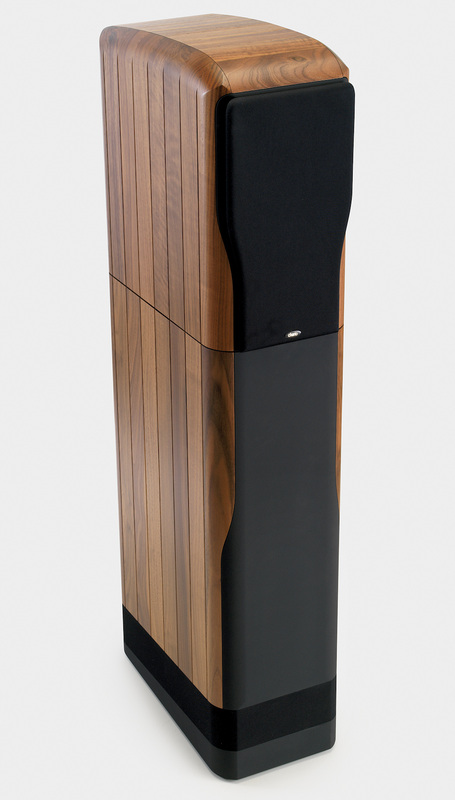
Chario Floorstanding Speaker
Floorstanding Speakers.
Floorstanding home theater speakers are the best way to go if you have the space for them. Floorstanding speakers are usually more full range, deliver greater dynamics, all while being easier for your amplifier to drive. Now some of you are already worried and thinking about those huge ugly speakers you used to have in college. Do not fret, home theater speakers these days are capable of huge dynamics and intricate detail and musicality, all while occupying a smaller footprint in the home than they did a decade ago.
Floorstanding speakers also give you the most flexibility for placement and Master Set™ speaker set-up. Pound for pound, dollar for dollar, floorstanding home theater speakers will always come out on top.
Bookshelf Speakers.
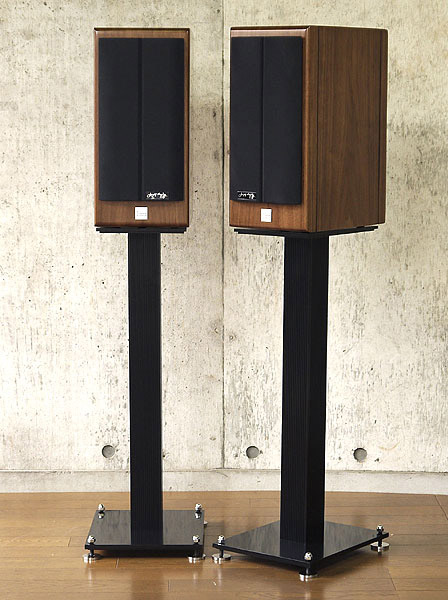
Vienna Acoustics Haydn Symphony on Stands
Bookshelf speakers work well in situations requiring them to go …. on a bookshelf. Some manufacturers will take this into account when designing the speaker to make sure it will play nice with room boundaries when positioned near or against a wall, even including things like front speaker ports instead of the traditional rear ports that can cause turbulence noise when back against a wall.
Bookshelf speakers can also be stand mounted to offer the same placement and Master Set™ flexibility as floorstanding speakers while giving you a smaller visual footprint in the room. You’ve heard it said, bigger is better. While this is true most of the time, with proper speaker placement there are some smaller home theater speakers can really buck this trend and knock your socks clean off.
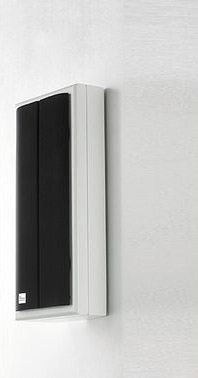
The Vienna Acoustics Waltz. Pound for pound this is one of the fiercest speakers we have ever known.
Wall-Mounted Speakers.
Wall-mounted speakers are great option for rear channels in a home theater where, more often than not, there is simply no room for floorstanding or bookshelf speakers. Wall-mounted speakers are also an excellent option for smaller rooms or families with small children (or big dogs) that could easily knock a floorstanding home theater speaker over.
Wall-mounted home theater speakers offer a great degree of flexibility being able to be mounted to either walls or ceilings. Since the speaker is still located in the room it has a great ability to pressurize the room. With proper Master Set™ speaker placement for wall mounted speakers, you can have a home theater system that will deliver an experience that will leave your jaw in your lap and have your friends searching the room for the “real” bigger home theater speakers that must be hiding somewhere.
In-Wall or In-Ceiling Recessed Speakers.
This is the most popular category for home theater speakers on the market. There are obvious reasons for this – you can put them almost anywhere you see drywall, you can paint them any color to match the décor, and they don’t take up any space in your room. While most retailers will happily sell you any number of in-wall or in-ceiling home theater speakers that you want, there are significant drawbacks to in-wall or in-ceiling recessed speakers that you should know about.
For one, in-wall or in-ceiling speakers don’t have the same ability to pressurize the room as traditional home theater speakers in the room do. This is because in-wall or in-ceiling recessed speakers are not located in the room, rather the room they are located in is the wall or ceiling enclosure you have chosen for them.
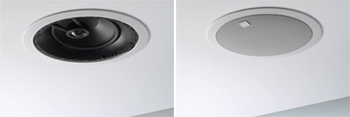
Dali Kompas In-Ceiling speaker with offset tweeter actually has ability to “direct” the sound into a room.
While the speaker enclosure is a very important component in the traditional home theater speaker design sometimes taking years to perfect, this is most often sacrificed piece with in-wall or in-ceiling recessed speakers because you are very restricted with the space you have inside a wall. Most manufacturers of in-wall or in-ceiling speakers choose not to have any enclosure at all which leads to decreased bass performance that will sound very bright and harsh in the room and also can easily transfer sound to other parts of the house – think about those sleeping guests (or children) right above your home theaters’ in-ceiling speakers.
However many the sound shortcomings of in-wall or in-ceiling recessed speakers be, they still remain a widely popular option in the home theater community and for us a good option when nothing else will work well. And with gratuitous amounts of fiberglass insulation, proper speaker selection, and great integration with a REL Sub-Bass system we can still create a reasonably good surround sound environment that is fun and enjoyable for the whole family.
While most any piece of stereo equipment that you plug into the wall will work exactly as it’s designed to, the one thing that won’t is your speakers. Your speakers will not work at their full potential unless they are critically positioned in the room. Your speakers are entirely dependent on your room for how well they will sound and perform. That is exactly why we’ve have dedicated so much time and effort to MasterSet™ to ensure that speakers sound their best when in your home.
From there, many things can make a difference to the overall performance of your system. Sub-bass systems from REL are a great way to dramatically increase the stage and presence of your stereo speakers. Better amplifiers offer more grip on your speakers to make them behave, giving you greater dynamic range on the loud passages end and more subtle detail in the quieter parts. Power conditioners from Isotek can lower your noise floor and increase the dynamic range on the bottom end which leads to dramatic improvements in detail and depth of stage. Speaker wire and interconnect cables are the “equalizer for the 21st century” and can fine tune your system to make it “pop”.
Owning a stereo system is fun, making it sound its absolute best is a real joy. If you haven’t had us do a MasterSet™ on your speakers, you need to do that. Then visit our store and check out our wide selection of awesome stereo products for a few items to take home and audition with your own stereo system. As you watch your stereo system come to life, you’ll be listening to music you’ve owned for years as if you were hearing it for the first time.
A record player or turntable has 2 basic functions. The first is to spin a flat disc, at a perfectly consistent speed – and do it without making any noise. Turntables with suspension systems, better motors, larger and heavier platters riding on higher quality bearings do a better job of this. The best turntables can be air driven with linear tracking tonearms.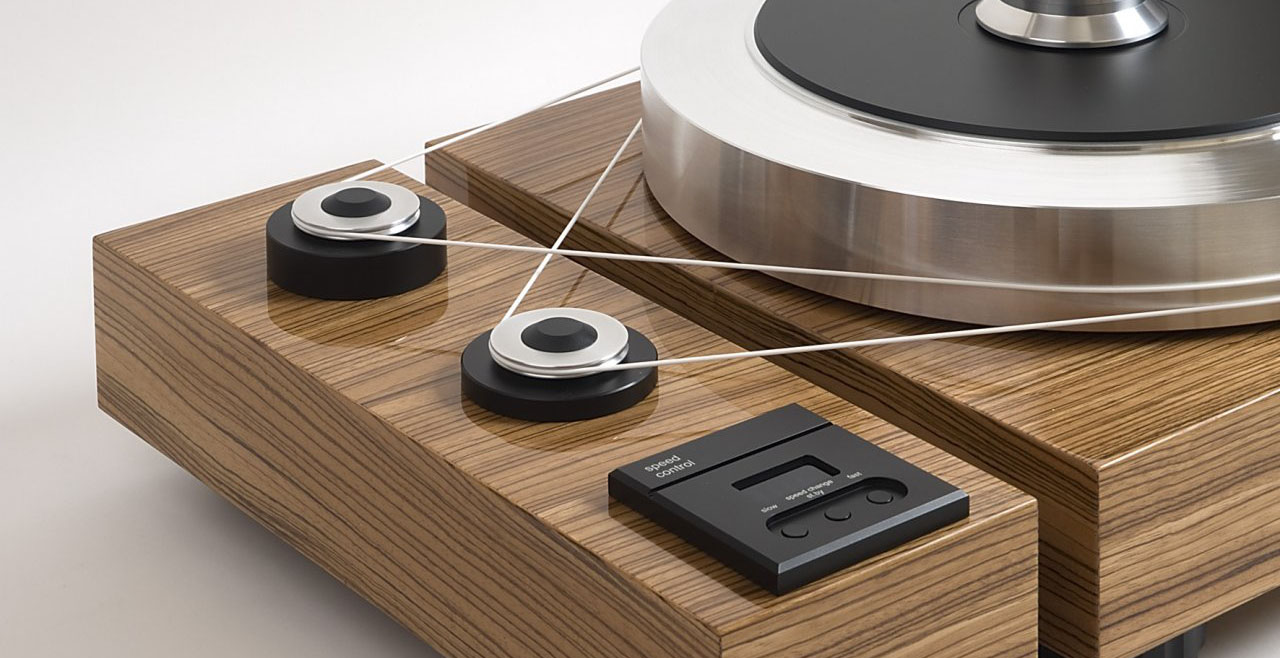
The second function is actually that of the turntable’s tonearm. The tonearms’ job is to perfectly align the cartridge (needle) on the record and hold it with a death grip – and do it without making any noise. The best turntables will have very sophisticated tonearms that allow you to adjust all of its parameters with infinite precision allowing the cartridge to play ALL the music that is in the groove on the vinyl record.
The difference in sound quality between various record players and turntables is as vast as the differences between home audio speakers. And, unlike digital music, it takes a certain amount of skill to combine and calibrate the various components of a record playing system, from proper alignment of the cartridge to properly setting the turntable tonearm , to get better sound.
Record players typically cost between $200 and $500 and are a great way to get into vinyl. Record players usually come with the cartridge pre-loaded, a built-in phono stage, and cables. Record players have very little setup or adjustments that you can do, simply plug it into your stereo system and voila – music!


